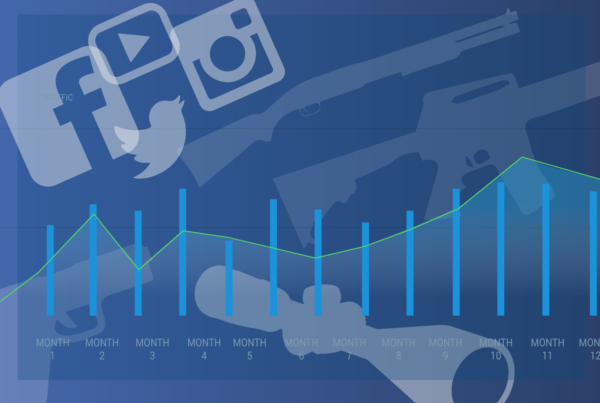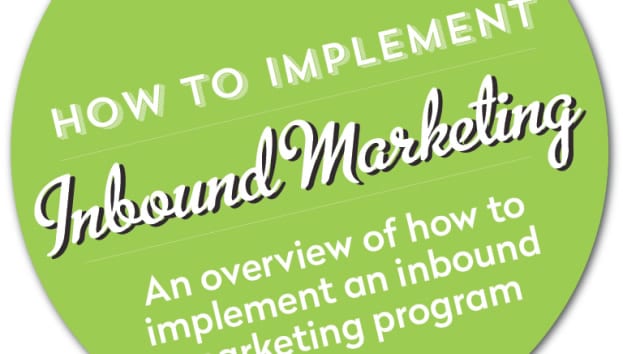
Now that you understand the differences of what inbound marketing versus outbound marketing is and have seen how inbound marketing works, now it’s time to learn how to implement this methodology into your own marketing program.
Below, I’ve included an infographic on How to Implement Inbound Marketing and divided it into 9 steps. To read more about each step, click here to skip to the bottom that describes each step in more detail.
If you would like to discuss and learn how you implement inbound marketing, please contact us today for a free 30-minute marketing assessment and consultation.
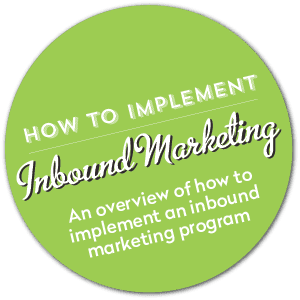 Step 1: Analysis of your current brand and marketing
Step 1: Analysis of your current brand and marketing
To begin, you need to evaluate your brand. Is it aligned? Brand alignment is described as this: Does the brand mean the same to your employees, your customers and to yourself? Do you have a unique story and message that allows you to stand out amongst your competitors? To maximize your inbound marketing efforts it will be critical to have a well-defined and differentiated brand position. A comprehensive brand development process will give you what you need to apply your brands voice, message and unique value proposition.
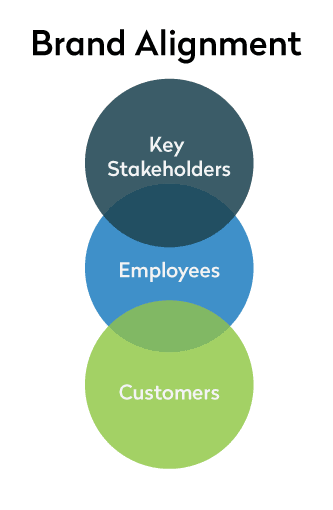 You will also need to look at your current marketing efforts. What is working what is not? Can you augment any current outbound methods that are working well with the new inbound program?
You will also need to look at your current marketing efforts. What is working what is not? Can you augment any current outbound methods that are working well with the new inbound program?
Lastly, you’ll need to install Hubspot™. HubSpot software includes all the tools you need to do inbound marketing, plus award winning services and support to help companies conduct successful inbound marketing campaigns.
Step 2: Competitor analysis
After your brand and marketing has been evaluated and tweaked accordingly you should then take a look at your competitors. The competitor analysis tool in Hubspot will allow you take a peek under the hood on their efforts. You can also utilize a tool like MOZ to garner strategic insight into what’s happening online. This will also give you insight into figuring out their current online strategies. Use this information to find the “whitespace” and create targeted brand messaging.
Step 3: Goal setting and key performance indicators
Next up is to take an honest look at organization and set some goals. Look to set goals using the SMART method: Specific, Measurable, Attainable, Realistic and Timebound that meets the C-Suites demands and then go for the “BHAG” (Big Hairy Audacious Goal). Inbound has the potential to blow your doors off if you’re not ready to deliver on your customer demands. Be prepared for the ‘what-ifs’ like; what if your close rate of qualified leads increased by 20%? How does this affect your company’s ability to scale? Are you ready? Be ready… As Mike Tyson said, “everybody has a plan till they get punched in the face.” Here are a few example goals:
- Increase web traffic by 5% in 3 months
- Increase qualified leads by 5% every month after month 4
- Convert 6% of leads to customers
Wrap it up with listing your biggest obstacles to obtaining these goals and some specific ways to overcome them.
Your Key Performance Indicators (KPIs) should incorporate what you’ve learned in the competitive analysis step. Hubspot will track leads, traffic, conversion rates, lead history and other key metrics for your reporting needs. Cross reference these benchmarks with your sales metrics and other brand reporting tools you may be using to give you a clear baseline.
Buyer personas are fictional representations of your ideal prospect that assist in the strategy and execution of a more targeted marketing campaign. Although fictional, they are based on real data, behaviors, and demographics learned through customer interviews and polls. (Source: Hubspot)
Who exactly are your customers? Do you know them as well as you should? I once read an article that said the “CMO is dead” and that it should be renamed as “CCO” – Chief Customer Officer. As marketers, it’s our responsibility to know our customers better than anyone else in the company. Begin by thinking how you will add value to the people you are targeting. Start by finding out everything you can about them. Here are a few examples:
- How is their job measured?
- What skills are required to do their job?
- Who do they report to? Who reports to them?
- What publications or blogs do they read?
- What are their biggest challenges?
- How do they receive their information? LinkedIn, Blogs, News?
- How do they prefer to communicate?
After you’ve interviewed them, create a dossier of them and keep it up on your wall. Begin to create all your content around solving their problems with remarkable, educational content.
Step 5: Setup website
You will need to get your website setup to conform to inbound standards by making the necessary adjustments. You will need the following:
- Blog
- Social signals
- Hubspot tracking script
- Twitter, Facebook, Google+, LinkedIn and Pinterest
- Forms
- Landing page and email templates
- CTAs
Hubspot has all the resources necessary to help you integrate these elements, but a good design agency can also customize and set these up as well.
Step 6: Create the content calendar and compile a strategy
Now that your brand is aligned, you’ve set some goals, you got some benchmarks in place— now it’s time to put together a strategy based on the inbound methodology (ATTRACT > CONVERT > CLOSE > DELIGHT) to market and grow your business through inbound marketing. This will be the game plan that you will use to guide you over the next 12 months. Summarize all the main points into a strategy outlining the key points of your plan. They should include how you plan to attract, convert, what happens when they convert, how you plan to delight them and then how you close them. Each phase should include specific content that moves them to the next step.
Get out a calendar and determine the time you have to devote to content creation every week and stick to it. Begin by listing a wide range of topics specifically tailored to your buyer personas. Put together dates as to when you want these topics to be posted. Try to create a back log of content as time permits.
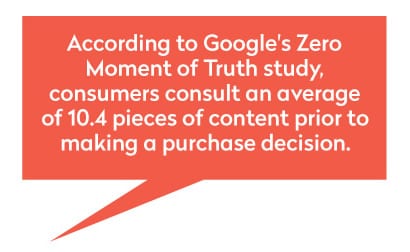 Step 7: Content creation, landing pages and social media
Step 7: Content creation, landing pages and social media
Coming up with something to blog about can sometimes be difficult. Hubspot offers a great tool to help you generate some ideas. Content you publish should be in the form of blogs, infographics, whitepaper and eBooks, webinars, videos and social media posts and links from other sources besides your own. Create value for your prospects and become a resource to them. Blog posts should have social signals so users can easily tweet, like or share your posts as well as a way to sign up to receive updates to your blog.
Once you have created a few whitepapers, ebooks it’s time to start creating some landing pages. The landing pages will feed prospect data into Hubpsot so you can easily track their click patterns on your site. This allows you to give a better customer experience by understanding what they are interested in.
Use Twitter, Facebook, Google+, Pinterest and LinkedIn to push your content far and wide.
Step 8: Lead nurturing
I can tell you from first hand experience that once you start blogging regularly you will start to see an increase in traffic. At about the 6 month mark traffic suddenly begin to shoot up as your content approaches a “critical mass.” At this point you should be moving customers along the marketing lifecycle and nurturing your prospects through the sales funnel by offering them specific content that solves their problems. Content should be highly personalized and manicured at this phase to be relevant. At this point, they will be asking for case studies and product pricing. Be prepared to offer this information to close the deal.
Step 9: Monitor and adjust
At this point you should have a significant, steady flow of traffic to test in real-time and be looking to make any adjustments or tweaks to make your landing pages, CTAs and content perform better. You can make big differences by A/B testing, trying out different subject lines, titles, colors and even buttons.
In conclusion, this is a brief snapshot of what is involved in implementing an inbound marketing campaign. There are several other components we did not get into like email, analytics, workflows and forms and ways to use social media.
If you would like to discuss and learn how you implement inbound marketing, please contact us today for a free 30-minute marketing assessment and consultation.






